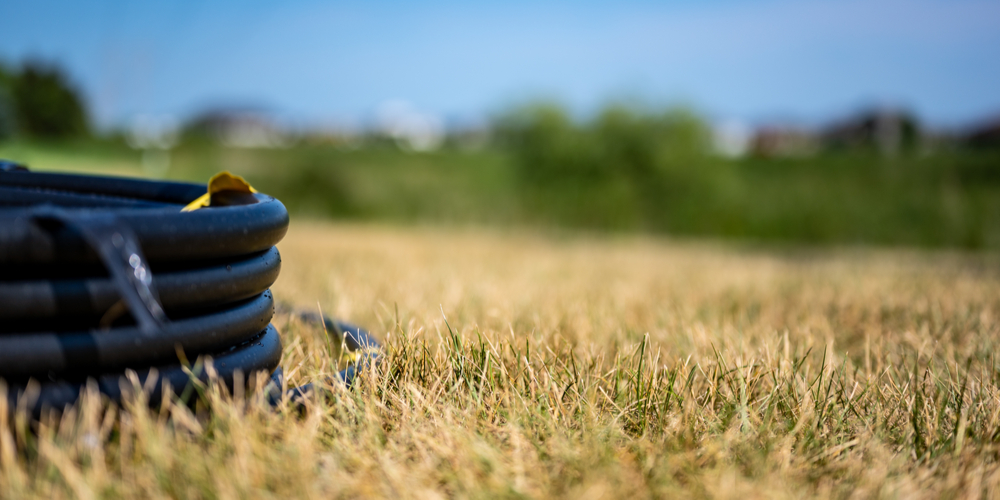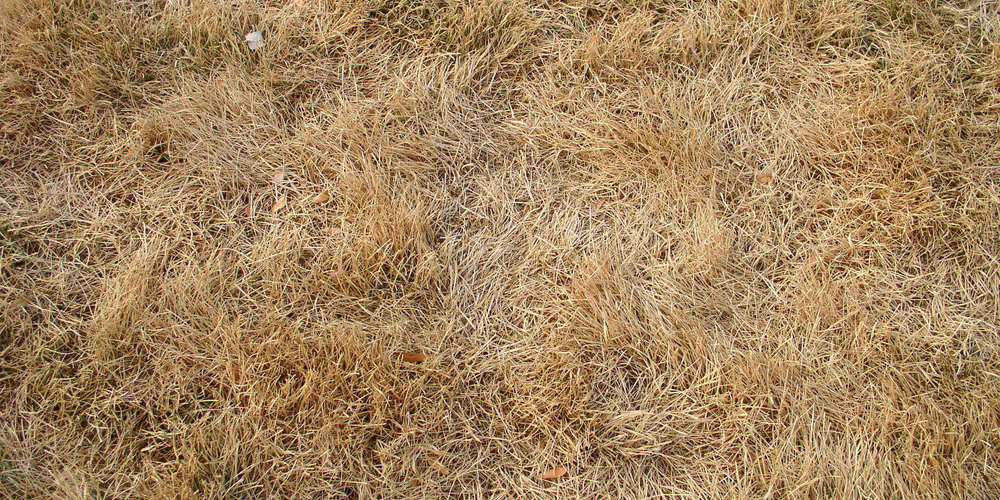Maybe you woke up or arrived home to find your lawn in a brown, seemingly lifeless state. However, before you remove the whole thing and replace it with new turf you’ll need to consider if the grass has just gone dormant. Here’s a short guide on dormant grass vs dead grass.
We’ll also give you a quick method to find out if your green lawn is still alive and just sleeping.
What is the Difference Between Dormant Grass vs Dead Grass?
Although dormant and dead grass appear the same, e.g., brown and withered, there’s one vital truth you should know- dormant grass will come alive and go green when its growing requirements are met, while dead grass won’t.
Much like plants and trees that die back and lose their foliage when fall or winter comes, grass can also exhibit the same behavior. With dormant grass the leaf blades will turn brown and appear to be dead, but its crown will still be green and probably waiting for the right opportunity.
The most probable reason why a grass will go dormant is because it’s not suited for the current season.
Warm season grass varieties grow and thrive during the warmer months and go dormant in cold weather, while cool season grass species turn brown when there’s too much heat and when it doesn’t get enough water.
Dead grass is exactly what it sounds- a dead plant that won’t be coming back even after a change of season or when you water them. Once you determine that your grass is dead you should immediately try to install a new one so your landscape remains aesthetically pleasing.
The reason for dead grass is most likely not enough watering or drought, pests and diseases, salt damage, forming of thatch and excessive fertilization. Remember that each grass variety will have its own set of growing requirements.
How to Tell Difference Between Dormant Grass and Dead Grass
There are several surefire ways to tell if your lawn is dead or dormant. One is with the ‘tug method’ and the other is by doing a quick ocular inspection.
With the ‘tug method’, all you have to do is give a small patch of grass a quick pull. If it comes off the ground easily and you were able to uproot the leaves, roots and all, then your grass is dead.
However, if there’s some resistance, like when the roots are holding on, then it’s likely in a dormant state.
The other method is by surveying the whole lawn and seeing if the area is completely brown, or if there are brown patches here and there and green elsewhere.
If the grass is uniformly brown and appears to be like a wheat field, then don’t give up hope as it’s most likely dormant. However, for brown patches on a green lawn then it means that they’re probably dead.
Before you replant with new grass it’s best to investigate the reason why it died. You may not be providing enough water during hot summer days, or you might be over watering and causing fungus to grow.
Salt damage and too much fertilization are also probable reasons why your turf died, and if you are able to pinpoint this then you should be able to do better the next time around.
You may also want to wait a few days to make sure the grass you have is just dormant and not dead. Alternatively, you can water the lawn and wait for the grass to turn green in around 10 to 14 days.
Failure to transform means it has died- which means you can proceed to the replanting phase.
It’s worthy to note that dormant grass will stay asleep but will start to suffer around 4 to 6 weeks of turning brown. For every week that it doesn’t get water or when the environment has not changed, about a quarter of the area dies off.
Grasses That Go Dormant
Simply knowing beforehand if your grass goes into dormancy can definitely help. You won’t have to second-guess or waste time throwing out a perfectly healthy (albeit sleeping) lawn.
The list of grasses that go dormant are as follows:
- Fescue grass
- Ryegrass
- Kentucky Bluegrass
- Bermuda grass
- Centipede grass
- Zoysia
- Carpetgrass
- St. Augustine
Related Article: What Does Dead Sod Look Like?

